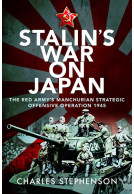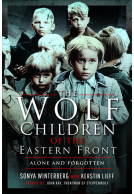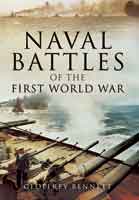Stalin's War on Japan (ePub)
The Red Army's 'Manchurian Strategic Offensive Operation', 1945
Imprint: Pen & Sword Military
File Size: 7.6 MB (.epub)
Pages: 272
Illustrations: 20 black and white illustrations
ISBN: 9781526785954
Published: 7th May 2021
| Other formats available - Buy the Hardback and get the eBook for £1.99! | Price |
|---|---|
| Stalin's War on Japan Hardback Add to Basket | £25.00 |
Did Japan surrender in 1945 because of the death and devastation caused by the atomic bombs dropped by the Americans on Hiroshima and Nagasaki or because of the crushing defeat inflicted on their armies by the Soviet Union in Manchukuo, the puppet state they set up in north-east China? Indeed, the Red Army’s rapid and total victory in Manchukuo has been relatively neglected by historians.
Charles Stephenson, in this scholarly and highly readable new study, describes the political, diplomatic and military build-up to the Soviet offensive and its decisive outcome. He also considers to what extent Japan’s capitulation is attributable to the atomic bomb or the stunningly successful entry of the Soviet Union into the conflict.
The military side of the story is explored in fascinating detail – the invasion of Manchukuo itself where the Soviet ‘Deep Battle’ concept was employed with shattering results, and secondary actions in Korea, Sakhalin and the Kuril Islands.
But equally absorbing is the account of the decision-making that gave rise to the offensive and the political and diplomatic background to it, and in particular the Yalta conference. There, Stalin allowed the Americans to persuade him to join the war in the east; a conflict he was determined on entering anyway.
Charles Stephenson’s engrossing narrative throws new light on the last act of the Second World War.
This is a revealing and informative read about a subject that rarely gets a mention in Second World War history, but then it might be because it doesn’t fit in well with a western narrative. This is a well researched and written book and it has been good to hear about this Russian action towards the end of the war. We’re always told that Japan pulling out of the war was because of the devastation caused by the US dropping two nuclear bombs on Japan, whereas there was probably something added into the mix such as the threat of a much improved Russian side over the border. I really enjoyed this book and would happily recommend it to others.
The History Fella
Review as featured in
Irregular Magazine
"The Soviet offensive in Manchuria had other long-lasting effects on the geopolitics of East Asia. One of its legacies is the ongoing dispute between Russia and Japan over the Kurile Islands. The division of Korea is another. This marks a critical reason for Stephenson’s book to be read by scholars of the Second World War."
The Journal of Military History
Review as featured in
VaeVictis
"The author covers the campaign at multiple levels, from the high-level interactions between leaders like Truman and Stalin to the battlefield experiences of the participants."
WWII History Magazine - February 2022
"...recounts the experiences of these different armies as they managed to penetrate the surrounding mountains, cross the Gobi Desert, push through swamps and across waterways to reach the central plain of Manchuria."
Military Review
Read the review here
If, like me, you considered the Soviet involvement in the Far East during the Second World War as something of a footnote, then this excellent book will disabuse you. Recommended.
Phil Curme
Read the full review here
"The author has written a very professional account of the events of August 1945. He handles political, diplomatic, and military affairs equally well. What could have been a shallow knockoff turns out to be one of the best books we've seen this year. Meticulously footnoted, including many Russian sources. Good photos. Decent maps. Thorough bibliography. For many readers, Stalin's War on Japan will contain everything they want to know about the end of the war in the Far East."
Stone & Stone Second World War Books
Read the review here
It is very detailed about a little-discussed arena of WW2 and I did like the new information I learned from it.
NetGalley, Meg Long
This is an excellent book and one which should be read by anyone interested in the war in the Far East. It presents the campaign mainly at Divisional level and above and it is highly enjoyable to read. There are numerous details, and the author has conducted some outstanding research. It will certainly be an “eye opener” as so little is known about this campaign in the West. For anyone interested in Japanese or Soviet World War 2 history this book is a “must have”.
Dr Stuart C Blank
Rating: 5 out of 5 stars
NetGalley, William Harris
I have recently finished reading an ARC of Charles Stephenson's marvelous study of the Soviet attack on Japan in the closing months of World II entitled "Stalin's War On Japan", due to be published shortly by Pen and Sword. I am pleased to report that the volume is both well written and quite illuminating in its discussion of the Soviet actions which occurred in compliance with their treat obligations to the Western Allies. Among other things, the text includes a fairly detailed study of Soviet deployments and planning in the period leading up to hostilities. What is more, and perhaps most tellingly, it demonstrates how far the Soviet forces in the Far East had come since the collapse of Nazi Germany and its European satellites and allies in the West. The carefully coordinated and overwhelming forces Stalin assembled for his attack on the Kwantung Army as well as the superb leadership, training and equipment that marked the massive assault force demonstrated how far the Soviet military had come since they had first engaged Hitler's Wehrmacht. Just as important, the much vaunted Kwantung Army, once an elite and highly feared armed force instrumental in supporting and prolonging Japan's adventure in China and the war in Asia was revealed as nothing more than a paper tiger, long drained of its elite units and populated, in the end, by whatever the Japanese could throw into the line, with weak air support and practically no armored support against a Soviet force constructed on the model of the massive armored armies employed against the Nazis. It is a fascinating and little understood feature of the Pacific War, and should be read with an eye towards the US employment of nuclear weapons as well as the fear engendered among Western leaders by Japan's apparent determination to fight to the death. I urge anyone interested in the decision to deploy nuclear weapons as well as the early post war foreign machinations of the the former Allied states to examine this work, It is well worth our examination.
About Charles Stephenson
Charles Stephenson is a native of, and still lives in, north Wales. As an established author of military, naval, and political history his previous works for Pen & Sword encompass: The Siege of Tsingtau: The German-Japanese War 1914 (2017); Stalin’s War on Japan: The Red Army’s Manchurian Strategic Offensive Operation 1945 (2021); and The Eastern Fleet and the Indian Ocean, 1942–1944: The Fleet that Had to Hide (2021).




















